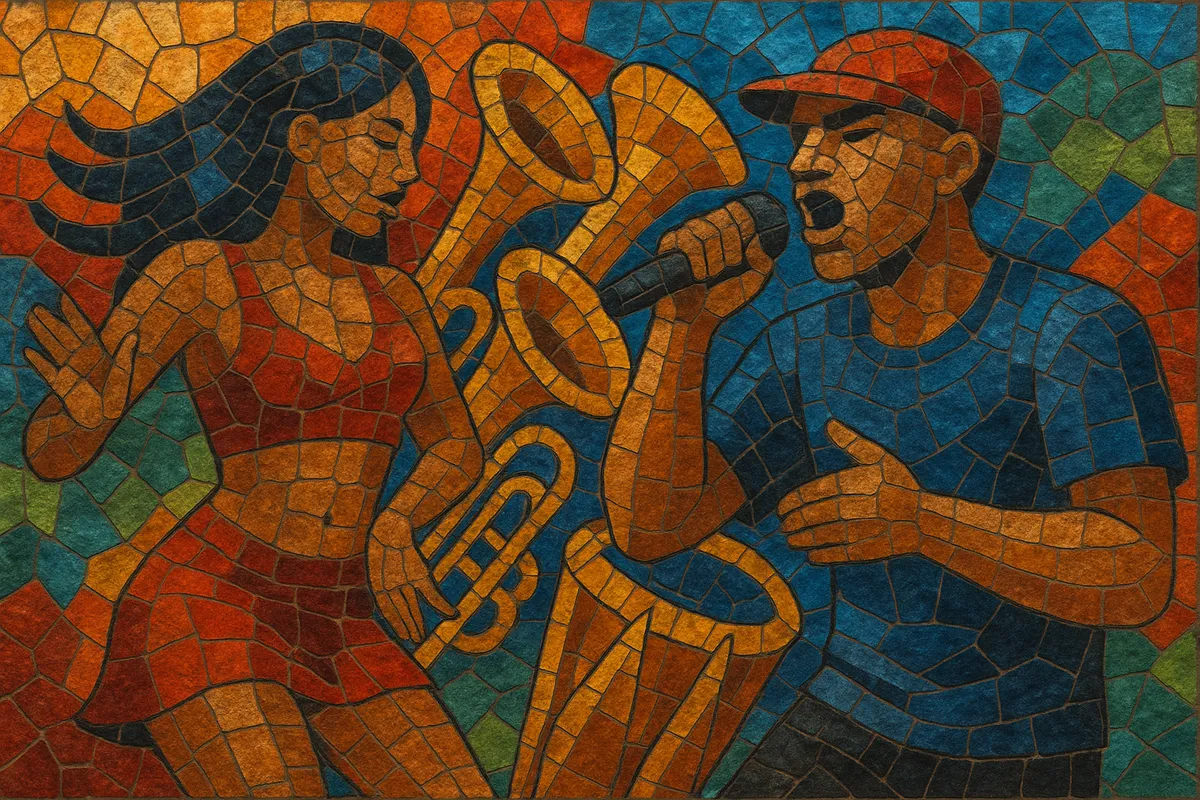Mambo chileno is a contemporary Chilean take on the reggaeton/dembow "mambo" wave, characterized by punchy dembow drums, aggressive synth-brass stabs, and high-energy drops designed for the club and street parties. It borrows the term "mambo" from the Caribbean urbano lexicon (where it denotes a brassy, hype section in reggaeton), but filters it through Chile’s own slang, vocal delivery, and dance culture.
In practice, tracks blend melodic, autotuned hooks with chantable, perreo-ready refrains, switching between steady dembow grooves and explosive "mambo" drops. Production emphasizes bass-heavy 808s, bright horn or synth-horn riffs, and simple, catchy harmonic loops, resulting in a style that is both locally identifiable and export-ready within the wider Latin urbano ecosystem.
The term "mambo" in urbano contexts originally referred to a hyped, brassy section within reggaeton and dembow tracks, popularized in the Caribbean during the late 2010s. In Chile, club DJs and young artists began adapting that sensibility at the start of the 2020s, aligning it with local flows, slang, and party culture. This gave rise to a distinct, scene-driven sound that fans and creators informally dubbed "mambo chileno."
Social media virality and DJ-centered ecosystems were crucial. Chilean producers popularized "mambo" remixes and originals tailored for packed dance floors—loud horns, heavy 808s, and call-and-response hooks. As the national urbano scene (trap, reggaeton, and hybrid Latin styles) surged, the mambo chileno identity crystallized around high-impact drops and sing-along refrains that translated well from TikTok/Instagram clips to clubs and live shows.
Mambo chileno kept reggaeton’s dembow backbone but favored brighter synth palettes and brassy motifs, often at slightly higher perceived energy via arrangement and drop design. Lyrics typically mix romance and nightlife with street-smart bravado, delivered in unmistakably Chilean phrasing. DJ culture—mixtapes, party series, and collaborative remixes—helped unify the sound and spread it across neighborhoods and regional circuits.
By mid-2020s, mambo chileno had become a recognizable branch of Chile’s urbano movement, coexisting with trap and pop-leaning reggaeton while feeding the national pipeline of dance anthems. Its flexible formula—dembow groove + horn-led drop—continues to evolve through collaborations, remixes, and cross-border features.


